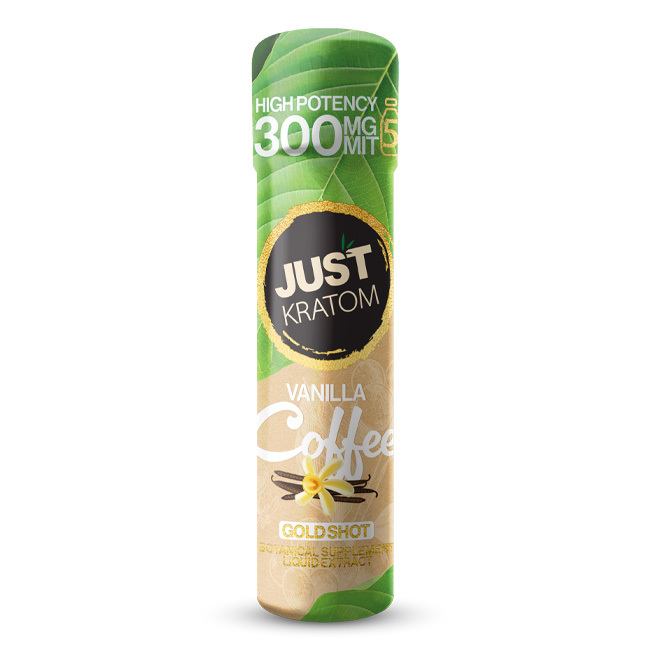The Evolution Of Kratom Gold Shots: From Traditional Use To Modern Times
Traditional Applications
%h2% Traditional Applications
For centuries, kratom has been traditionally used in Southeast Asia for a variety of purposes.

Its leaves have been chewed fresh, brewed into teas, or consumed as powders to alleviate pain, reduce fatigue, and enhance focus.
In traditional medicine systems like Ayurveda and Traditional Chinese Medicine, kratom was recognized for its potential medicinal properties.
Cultural Significance
Krtatom’s cultural significance extends beyond its medicinal applications. It holds a place in the social fabric of Southeast Asian communities.
The plant is often used in ceremonies and rituals, symbolizing hospitality, generosity, and community bonding.
In some cultures, kratom consumption is associated with shared experiences and social gatherings.
Emergence and Popularity
Kratom’s traditional use stretches back centuries in Southeast Asia, where it was employed for various medicinal purposes and held cultural significance.
The leaves were consumed fresh, brewed into teas, or powdered to address pain, fatigue, and improve focus.
Ayurveda and Traditional Chinese Medicine acknowledged kratom’s potential therapeutic benefits.
Beyond its medicinal role, kratom played a part in social customs and rituals, symbolizing hospitality, generosity, and community bonding.
Marketing and Distribution Strategies
Marketing and distribution strategies for Kratom Gold Shots have evolved significantly alongside the changing consumer landscape and evolving regulations.
Initial marketing efforts often focused on highlighting kratom’s traditional uses in Southeast Asia, emphasizing its historical medicinal applications and cultural significance.
Distribution primarily relied on local shops and online marketplaces catering to niche audiences interested in alternative wellness products.
As awareness of kratom grew, so did the need for more sophisticated marketing approaches.
Brands started emphasizing the potential benefits of kratom gold shots for energy, focus, and pain relief, targeting consumers seeking natural alternatives to stimulants or painkillers.
This shift in marketing strategy coincided with a move towards broader distribution channels, including specialty health food stores, convenience stores, and online retailers.
The evolving legal landscape surrounding kratom has also played a role in shaping distribution strategies.
Some companies have adapted by focusing on compliant products and partnering with regulatory-savvy distributors to ensure safe and legal access for consumers.
Key Ingredients
%h2% Key Ingredients in Kratom Gold Shots
Kratom gold shots are primarily formulated using kratom powder extract.
- Kratom Powder Extract: This is the main active ingredient derived from the leaves of the Mitragyna speciosa tree.
- Other Botanicals: Some brands may incorporate additional botanical ingredients believed to enhance kratom’s effects or provide complementary benefits. These can include herbs like guarana, ginseng, or ashwagandha.
- Flavorings and Sweeteners: To improve palatability and mask the natural bitter taste of kratom, manufacturers often add sweeteners like honey or agave nectar and flavorings such as fruit extracts or spices.
Pharmacological Properties
%h2% Pharmacological Properties
Kratom exerts its effects through interactions with opioid receptors in the brain. The active alkaloids, mitragynine and 7-hydroxymitragynine, bind to these receptors, producing a range of physiological and psychological effects.
These effects can vary depending on dosage, individual factors, and the specific strain of kratom consumed.
At lower doses, kratom is often reported to produce stimulant-like effects, including increased energy, focus, and sociability.
Higher doses typically induce sedative and analgesic effects, relieving pain and promoting relaxation.
Kratom’s complex pharmacological profile makes it a subject of ongoing research, with scientists investigating its potential therapeutic applications and risks.
Reported Benefits and Risks
Kratom gold shots offer purported benefits such as increased energy, enhanced focus, and pain relief.
These effects are attributed to the active alkaloids in kratom, mitragynine and 7-hydroxymitragynine, which interact with opioid receptors in the brain.
However, it is important to acknowledge the potential risks associated with kratom consumption.
Potential adverse effects include nausea, vomiting, constipation, anxiety, insomnia, and dependence.
Long-term use may lead to more serious health problems, including liver damage and respiratory depression.
Due to the lack of rigorous scientific research on kratom’s safety and efficacy, it is crucial to exercise caution and consult with a healthcare professional before using kratom products.
Legal Status Across Regions
The legal status of kratom varies significantly across regions worldwide. In some countries, kratom is completely banned, while in others it is legal and freely available.
The United States has taken a more nuanced approach, with federal law classifying kratom as an “herbal supplement” but leaving its regulation to individual states.
Consequently, kratom’s legality varies from state to state, with some allowing its sale and use while others have imposed restrictions or outright bans.
The European Union has largely taken a cautious stance on kratom, with most countries classifying it as a “novel food” or a controlled substance.
This means that the sale and possession of kratom are often regulated, and access may be limited in certain areas.
In Southeast Asia, where kratom originates, its traditional use is widely accepted, and it is generally legal.
However, some countries in the region have implemented regulations or restrictions on its cultivation, sale, and consumption.

The evolving legal landscape surrounding kratom reflects the ongoing debate over its potential benefits and risks.
As research continues to shed light on kratom’s pharmacological properties and potential therapeutic applications, policymakers are grappling with how best to regulate this complex plant.
Efforts to Regulate or Ban Gold Shots
Efforts to regulate or ban kratom gold shots have been ongoing due to concerns about potential health risks and the lack of rigorous scientific evidence supporting their purported benefits.
Advocates for regulation argue that kratom’s opioid-like effects pose a risk of addiction and dependence, particularly among vulnerable populations such as adolescents and individuals with pre-existing substance use disorders.
They also point to potential adverse effects such as liver damage, respiratory depression, and cardiovascular problems.
Furthermore, the lack of standardized manufacturing practices and quality control in the kratom industry raises concerns about contamination and inconsistent dosing, which can contribute to unpredictable and potentially harmful effects.
Regulatory bodies in various countries have responded to these concerns by implementing measures to control or restrict access to kratom products.
Some jurisdictions have outright banned kratom, while others have imposed restrictions on its sale, distribution, and possession.
In the United States, the legal status of kratom is complex, with federal law classifying it as an herbal supplement but leaving regulation to individual states.
As a result, there is a patchwork of regulations across the country, ranging from complete bans to permissive policies.
The debate surrounding kratom regulation continues, with proponents of legalization highlighting its traditional use and potential therapeutic benefits, while opponents emphasize the risks associated with its consumption.
Public Perception and Stigma
%h2% Public Perception and Stigma
Public perception of kratom is complex and multifaceted, often influenced by cultural norms, personal experiences, and media portrayals.
In some communities, kratom is viewed as a traditional medicine or a natural alternative to pain relievers and stimulants.
However, in other circles, it faces stigma and is perceived as a dangerous substance with potential for abuse and addiction.
This duality arises from the fact that kratom exerts effects similar to opioids, leading to concerns about its addictive potential.
Negative media coverage and sensationalized reports have contributed to the stigmatization of kratom, further complicating public understanding.
Overcoming this stigma requires a nuanced approach that involves:
- Promoting accurate information about kratom’s effects, risks, and potential benefits through reliable sources.
- Encouraging open and honest conversations about kratom use within communities.
- Reducing the criminalization of kratom users and promoting harm reduction strategies.
Addiction and Potential for Abuse
%h2% Addiction and Potential for Abuse
Kratom’s opioid-like effects raise concerns about its potential for addiction and abuse. The active alkaloids in kratom, mitragynine and 7-hydroxymitragynine, bind to opioid receptors in the brain, producing a range of effects that can be rewarding and reinforcing.
Repeated use of kratom can lead to physical dependence, characterized by withdrawal symptoms such as anxiety, insomnia, muscle aches, and nausea when use is stopped abruptly.
Long-term kratom abuse can result in significant health problems, including liver damage, respiratory depression, and cardiovascular complications.
Individuals with a history of substance use disorders or those prone to addiction may be at increased risk of developing a dependence on kratom.
It’s important to emphasize that not everyone who uses kratom will become addicted.
The risk of addiction appears to be higher among individuals who use kratom daily or in high doses, as well as those with pre-existing mental health conditions or a family history of addiction.
Ethical Considerations
%h2% Ethical Considerations
The increasing popularity and accessibility of kratom gold shots raise several ethical considerations that warrant careful examination.
One key concern is the potential for harm, particularly among vulnerable populations. While some individuals may use kratom safely for pain management or other purposes, others may develop dependence or experience adverse effects.
It’s crucial to ensure that access to kratom products is responsibly managed and that consumers are adequately informed about the risks involved.
Transparency in manufacturing practices and labeling is essential.
Consumers have a right to know the exact contents of kratom gold shots, including the concentration of active alkaloids and any added ingredients.
Standardized quality control measures are needed to ensure product consistency and minimize the risk of contamination or adulteration.
Furthermore, ethical considerations extend to the marketing and promotion of kratom gold shots. Claims made about potential benefits should be supported by credible scientific evidence and avoid misleading or unsubstantiated assertions.
Marketers have an obligation to present a balanced view of kratom’s risks and benefits, empowering consumers to make informed decisions.
Finally, ethical considerations encompass the broader societal impact of kratom use.
As kratom becomes more mainstream, it is important to engage in open and honest dialogue about its potential consequences for public health, addiction rates, and cultural norms.
A collaborative approach involving policymakers, healthcare professionals, researchers, and consumers is essential to navigate the complex ethical challenges associated with kratom gold shots.
Buy Kratom Gold Shots Online at Just Kratom
- How Long Does Lip Filler Take To Settle - August 15, 2025
- How Long Does It Take For Kratom Gummies To Work? - August 14, 2025
- How Long Do Results From Traptox Trapezius Botox Treatment Last - August 12, 2025
